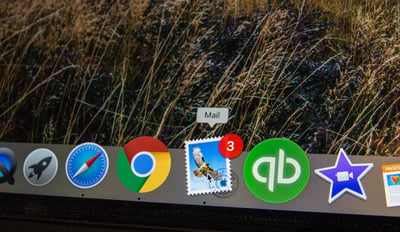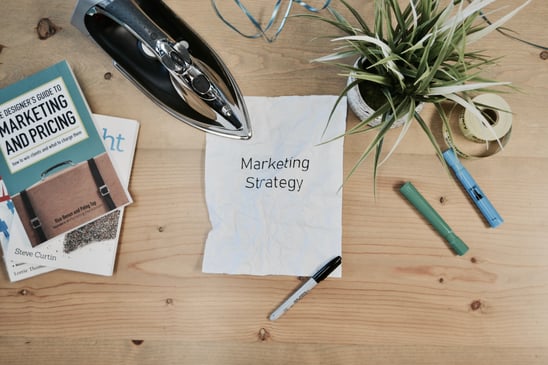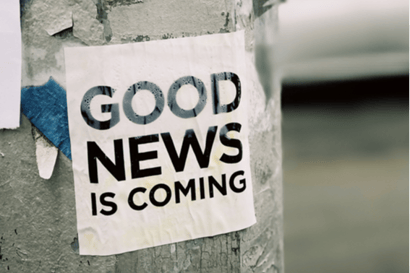
We can all think of a company newsletter that we love - or the ones that we hate seeing in our inbox and unsubscribe... The truth is, no matter your opinion on newsletters, every company must maintain some type of close communication and bond with their customers. A monthly newsletter for your business is the simplest and most effective way to achieve this.
But do you know how to create and develop an effective strategy for this type of Marketing email campaign? From mbudo, we share the need-to-know information on how to make your newsletter email sends the star of your Marketing strategy!
Newsletter Definition
A newsletter is a periodic email that is disseminated to subscribers who have shown a prior interest in your company. Its content is mostly informative, but also allows you to share interesting news and updates, new blog content, promotions, etc. Therefore, it is an extremely effective element to use as part of your lead nurturing strategy.
Following an Inbound Marketing strategy, you can use newsletters to meet the following objectives:
- Spread your content, thus increasing brand awareness.
- Convert your subscribers into leads, (and then customers).
- Build customer loyalty to improve engagement.
Benefits of a Monthly Newsletter
Today, the coveted monthly newsletter continues to post healthy results in Marketing campaigns for businesses across every industry. It is one of the most important elements in a company's communication strategy due to these benefits:

- Newsletters have a longer lifecycle than social media posts, since they can be easily seen and consulted in an email inbox.
- The audience that receives your newsletter is already interested in your company and sector, since they actively subscribed to the newsletter.
- Although it is not a direct sales tool, it can lead to sales generation since it helps you showcase news and information on your products/services.
- Monthly newsletters are consistent and improve trust and interaction with your customers.
- This type of content does not require a large investment, with free platforms available like Mailchimp, SendPulseor MailerLite. Other great platforms include Pardot and HubSpot.
- It is a source of traffic to your corporate website or blog, since you can periodically show news updates, info, and offers.
- Most importantly, it allows for the sending of highly-segmented and personalized messages.
Does your company really need a newsletter?
Focusing all of your Content Marketing efforts in one area - for example, gaining followers on social media - could trigger problems for your business in the future. These days, a newsletter subscriber tends to be worth much more than a follower on social media. This can be seen in the conversion data; subscribers sign up because they care about your brand or services, while social media fans or followers can interact with your social networks for a diverse number of reasons.
To make the decision whether it's worth including this tool in your strategy, we recommend carrying out a short investigation into these aspects:
- In your sector, are newsletters commonplace? Do your competitors send one?
- What resources (content, budget, time, and personnel) do you have available to carry out this project?
- Does your company have the potential to get a positive ROI from monthly newsletters?

After digging into these questions, you must examine the objectives of your company and your objectives in implementing a newsletter. Do you want to:
- Generate leads?
- Better qualify leads for the sales team?
- Do cross-sell or up-sell for your products or services?
- Retain more clients?
If you have come to the conclusion that you have room in your strategy for a monthly newsletter, and that the results that could come from achieving your objectives are worth it, it's time to take the next step! To begin, you need to create an action plan for your newsletters.
What type of monthly newsletter is right for your business?

One of the main struggles when creating a newsletter is honing in on specific Personas and objectives. It's easy to lose focus with all the different moving parts of your business.
Your subscribers don't only want to know about the products and services you offer; they are also looking for educational content, such as tips, guides, product reviews, offers, etc. In short, your content needs to be interesting and diverse.
Below, we show you the three types of newsletters that you can use depending on your company, content, and objectives:
1. Letter from the Editor or Featured Article:
This type of newsletter is recommended for:
- Companies that provide their expert opinion or advice on an industry topic.
- Businesses willing to spend more time and resources on creating a newsletter.
- Companies with a well-known figurehead, leadership team, or group of experts that will address subscribers.
It is an extensive newsletter (between 200 and 2,000+ words), but it depends above all on the topic to be discussed and on your audience. It is important that your content answers the following questions:
- Why is this important to my subscribers?
- Does it add value?
- Is it a relevant topic in my industry?
- Is it attractive enough for my subscribers to keep reading?
2. Curated Content or Links:
This style is recommended for:
- Brands and businesses that want to provide quick value to their clients.
- Companies that do not have much time.
It is all about filtering, grouping and selecting information that comes from different sources, such as internal links (your own content) or external links (the content of other companies - non-competitors, of course!) The key in this style of newsletter is to provide a context to each link; that is, to explain why the content that you are showing them will interest them.
3. Blog Content
Recommended for:
- Companies that have an extensive and up-to-date blog.
- Brands that want to drive a large amount of traffic to their content.
The main goal is to drive traffic to your digital content. To do this, use brief and compelling writing that causes your readers to want to continue reading. The links can lead to your website, blog, YouTube channel, etc.
The possibilities are varied, but what must always be remembered is this: the user has requested to receive your newsletter through an opt-in; therefore, don't be boring! You shouldn't disappoint a user who has shown an interest in your company, don't you think?

10 Tips for a Successful Newsletter
There is a lot we can say about Email Marketing design and best practices. Below, we summarize the top 10 to implement in your action plan:
- A powerful subject line gets your foot in the door.
- Use a simple and clean, yet striking design; this includes a header with your logo and a footer with the company details.
- Include is a single, highly-visible CTA. The purpose of your newsletter is to get subscribers to take a certain action. Keep that in mind when creating each newsletter.
- Always use your normal colors and branding.
- Remember the Buyer Persona you're writing to - change your tone, wording, etc. based on this.
- The stage in the Buyer's Journey should heavily influence your content choices.
- Personalize the message of each newsletter.
- Implement email automation using good segmentation and database management.
- GDPR is very important! Include an option to unsubscribe from your content and access the privacy policy and cookies policy.
- Make sure to revise, send tests, and format for different devices before the final send.
As you can see, no matter what business or industry you're in, a monthly newsletter always plays a very important role in Inbound Marketing strategy. The important thing experimenting until you find the best formula. If you need help implementing Email Marketing into your content strategy, contact us today.

Alba Romero
Alba has been a lover of Marketing in all of its forms since she began studying, so she decided to make her passion her profession. She also loves animals, music, travel, and new cultures.
It may interest you
LATEST
BLOG POSTS
SUBSCRIBE TO MBUDO BLOG
And get your inbound news directly in
your inbox, once a month.


